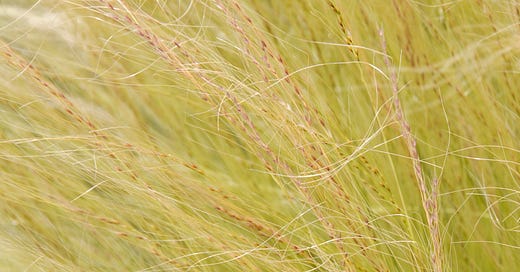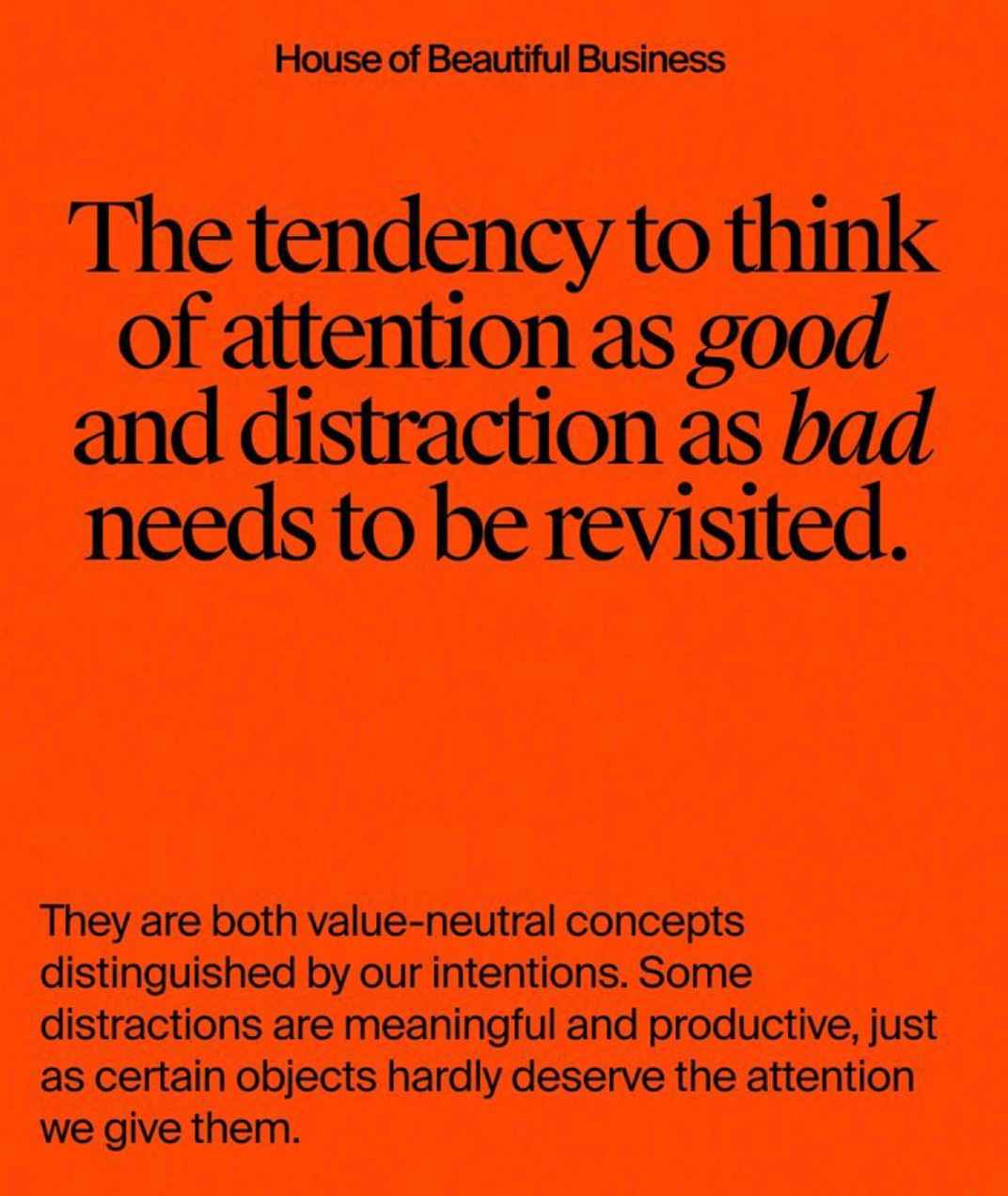Following the Threads of your Attention
Part 3 - Pilot Project Runs September 29th - November 10th
In my last couple of posts, I’ve shared about the types of attention and introduced a pilot project around following the threads of your attention, which will begin at the end of this week. If you’d like to be a part of a six-week exercise in monitoring your own attention and seeing what it tells you, this post contains the nuts and bolts on how to prepare and participate. Let me emphasize that this is not a course. Each week, I will start a thread for you to share your own threads of attention. I may offer some little tidbit about attention but the main purpose is just to provide the space to share what we’re discovering or to ask for help in uncovering themes and patterns and surprising discoveries.
But first, why do this?
I was telling a local friend about this and, at first, she laughed. I was a bit taken aback, even though I realize that not everyone is as introspective as me. Instead of getting defensive, though, I attempted to explain why we were doing this. I said that, for most writers and artists in general, following the threads of their attention is a crucial part of their creative process. And, since everyone is an artist of their own life, it just might be an important practice for everyone. In Jeannine Ouellette’s Writing in the Dark Substack, she wrote the following.
“Curiosity —> attention —> discovery —> meaning. When we pay very close attention to the world (a skill which requires practice), the world reveals itself to us in ways not otherwise immediately apparent. When we’re paying attention, the bird, or missed freeway exit, the broken saucer—all take on various depths of meaning beyond the obvious. I’ve found this process of attention-revelation-meaning to be immeasurably valuable to my writing practice.”
Personally, I’ve been reading a lot about the randomness and unpredictability of life and the role chance plays in it. I think it’s perfectly okay and often necessary to make plans and goals but I also think it’s important to hold them loosely. We can practice doing this and learning how to adapt to constantly changing conditions. I believe that the world is always calling us in some way and that call is often subtle or quiet but it doesn’t let go. For the next six weeks, we can practice listening together.
Remember that the purpose of this project is to help you become more clear on where your attention is going and what is most important to you. Then, you can make those things a priority.
How to Prepare
First, I suggest that you download and print six copies of the worksheet. It’s designed to cover one week. Of course, you can also choose your own method of recording your threads of attention (a journal or phone notes, for example). In fact, I’m very interested in knowing how you adapt the method of recording. My way is not the only way.
We’ll begin this Sunday, September 29th. As the week progresses, jot down items that pull your attention and record them under the appropriate category. You can do this throughout the day or at the beginning or end of each day. Here’s the schedule.
October 5th - Week 1 (September 29 - October 5)
October 12th - Week 2 (October 6 - October 12)
October 19th - Week 3 (October 13 - October 19)
October 26th - Week 4 (October 20 - October 26)
November 2nd - Week 5 (October 27 - November 2)
November 9th - Week 6 (November 3 - November 9)
You don’t have to record everything you pay attention to; that would be all-consuming. Stick to what you remember or what sticks with you the most. Note what books/articles you read, what websites you visited, who/what you interacted with. Especially pay attention to how something makes you feel - happy, excited, angry, disgusted, inspired, etc. It’s often emotions that drive our actions.
When you’re interested in something, you may notice that topic starts to come up a lot. For example, if you’re thinking of buying a Subaru, you’ll suddenly start seeing Subaru’s everywhere. That’s natural. Notice when something comes up that is related to a current interest. Or, on the flip side, notice when something comes up totally unbidden and inspires a new interest. It makes you want to learn more. Much of life happens by chance.
At the end of each week, you’ll review what you’ve recorded and look for any associations, themes, messages, or action items. I suggest you highlight five main attention-grabbers that either made you feel the most or made you want to learn more or take some action.
Notice what distracted you. It could be going down the rabbit hole of a current celebrity’s behaviour or a legitimate news event that requires your attention. It could be something personal, like a family member or friend needing your help. The House of Beautiful Business posted this about distractions on Instagram.
What to Share in the Weekly Thread
You could list your five main attention-grabbers and the themes or patterns you saw or any action you took. Or, you could ask the group what they see in your attention items. Sometimes, it’s hard to see any connection.
Share any other insights or surprises or aha’s that come up for you. It should get a little easier after the first week.
I’m planning to use Substack Chat for the weekly threads. You have to be subscribed to the Chat to participate and instructions for doing so are below.
Subscribe to Seeing Clearly if you’re not already subscribed. It’s free, by the way.
To join our chat, you’ll need to download the Substack app (available for both iOS and Android). Chats are sent via the app, not email, so turn on push notifications so you don’t miss conversation as it happens.
Open the app and tap the Chat icon. It looks like two bubbles in the bottom bar, and you’ll see a row for my chat inside.
If you have any issues, check out Substack’s FAQ or reply to this email. Ask any questions you have now. And, thanks for participating!
Additional Resources
This was the original post that got me thinking about this project - from Austin Kleon.
Which caused me to discover this site - The Strother School of Radical Attention. Check out their 12 Theses of Attention.








What a fun idea!